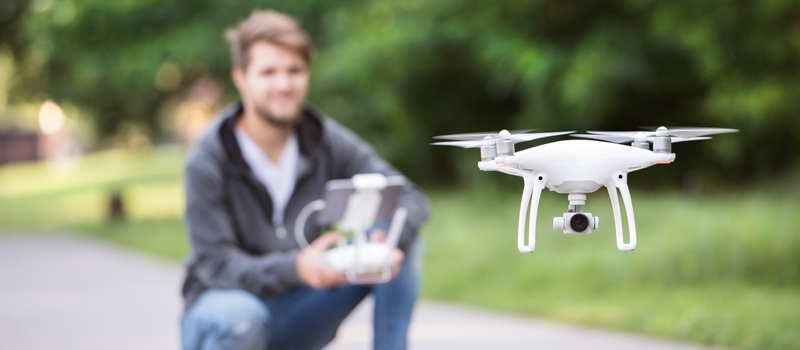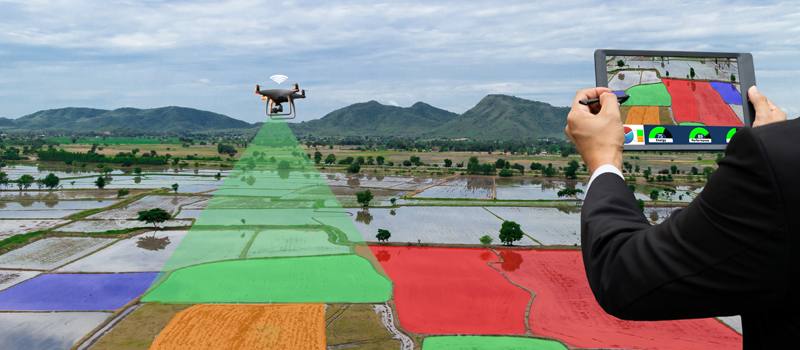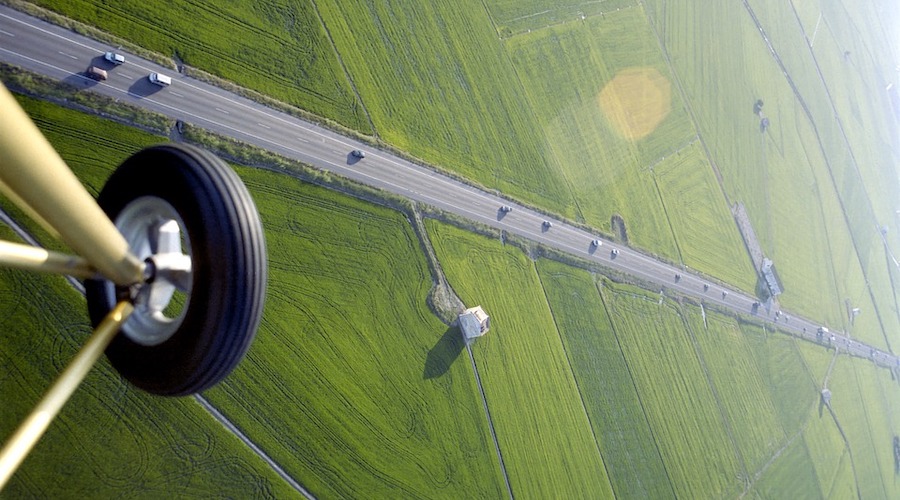-
Why you should not get distracted
-
Best option: have another person in your flight crew
-
Prepare an info card
-
A few measures to take before flying your drone
- Fly recreationally or commercially
- Have airspace authorization, if necessary
- Fly from a public space
- Check local rules
- Avoid taking close-up photos of people without permission
-
Final thoughts
Drones probably rank way up there in the list of fairly popular technologies, yet poorly understood by the public. If you’ve ever operated a drone in a public place, you have probably experienced the effects of this first-hand. People just can’t resist asking about drones. Sometimes, they can even challenge your right to fly one.
As a drone pilot, dealing with bystanders is something you will have to anticipate. This can be bad news if you’re not prepared. To make sure that you don’t get distracted, here are a few things you can do to get ready for ground-based interruptions.
Why you should not get distracted
According to the FAA’s guidelines, drone pilots should keep their drones within visual line of sight at all times. How far exactly this is depends on the size of the drone and the prevailing weather conditions. Regardless, a drone pilot is expected to know the location and attitude of the drone by simply looking at it without any vision-enhancing tools.
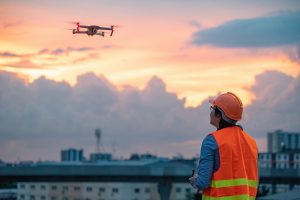
While there is a certain leeway for a drone pilot to divert their gaze from the drone for a few seconds, getting distracted by engaging with people on the ground frequently or for long periods is discouraged. After all, it only takes a few moments for a drone to run into an airborne obstacle like trees or birds. In some circumstances, a drone pilot can be distracted long enough to lose their sense of orientation, especially when visibility is less than ideal.
However, getting approached by people is an inevitable aspect of drone flight. The most benign version of this involves people who are genuinely just curious about what you are doing or what type of drone you’re flying. There can also be more aggressive approaches, such as people who will accuse you of flying over their property or taking their photos without permission.
At the most extreme, you might even have law enforcement officers asking you about your operations and checking if you have the proper paperwork. When things get heated up, it can be easy for you to lose composure and start making mistakes – both in flying your drone and in addressing the situation.
The best way to make sure that such situations do not escalate is to prepare for them to happen every single time you fly your drone.
Best option: have another person in your flight crew
If you fly drones professionally, then you’re probably no stranger to doing drone operations as a crew. Whether as visual observers or ground support, having more people on your crew is always a great way to make sure that the remote pilot-in-command (RPIC) always stays focused on flying the drone.
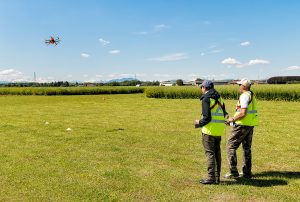
In cases where you anticipate people on the ground approaching the RPIC, it’s typically a good idea to have one member of the crew be responsible for engaging with these people. This is the most reliable option that will ensure that drone operations can proceed as normal, even when the crew is approached by more aggressive people.
While nothing can compare with the ‘flexibility’ of a human responder, the person assigned to this task must also be well-versed in the matter of drone rules and regulations. This would not be a problem if people were only asking about what you were doing. However, people who challenge your legal ground to operate a drone may have to be handled by someone with more knowledge in the matter.
Prepare an info card
While flying with a crew is ideal, it’s not something that can be practically done every single time you fly your drone. Perhaps you’re just doing a small job or simply doing reconnaissance for a bigger job in the future. In these cases, you’re more likely to head out on your own.
However, being all alone doesn’t exactly give much deterrence to people who want to talk to you while flying a drone. No matter the circumstance, you pretty much still need to engage with these people. In the case of law enforcement, you don’t really even have a choice but to respond.
A method we find that works is to have a prepared information card that you can quickly hand out to bystanders. Ideally, this card will have enough information to answer their questions. If it does not, it at least buys you time to land your drone and engage with them more safely.
If you’re thinking of preparing this card, then here are some of the statements we suggest that you include. It’s best to have the card laminated and printed in a very easy-to-read and legible font.
- A blanket statement that you are operating a drone and that this is an activity that will require your undivided attention. Recommend that they read through the whole card first and to let you know if they still have questions or concerns that are not yet addressed by the statements in the card.
- Your name and FAA registration number (if applicable)
- The type of drone you are using and the corresponding registration number. If you own multiple drones, you can list them all down on the same card.
- The objectives of your operation and the drone flight rules you’re flying under. You may need to prepare separate info cards for when you are flying commercially or recreationally.
- A statement that you are flying from public land (like a park or a street) or within your own private property.
- A statement that you are flying in Class G airspace. Should you be in restricted airspace, this statement can state that you are aware of the fact and that you have secured the necessary airspace authorization.
- A statement saying that you are aware of all drone flight rules and are compliant with them during the operations. You can list down some of the basic rules here including flying within visual line of sight, at 400 feet altitude maximum, and avoiding flying over people and moving vehicles.
- A statement that you will be glad to provide your FAA license and LAANC authorizations, if applicable. However, you cannot perform these actions while the drone is still airborne.
- Should the person require that you engage with them more actively, there should be a final bullet point in the list stating that you will have to land your drone safely first and that they will have to wait.
Make sure that this info card is easily accessible while you fly your drone. We recommend printing multiple copies of the info card.
A few measures to take before flying your drone
The best way to avoid any unexpected hassles when you fly a drone is to make sure that you’ve done your homework before setting off. More important than preparing an info card or having a person on the ground field questions from bystanders, you need to make sure that your operations are compliant with all applicable rules and restrictions.
Fly recreationally or commercially

Whenever you fly a drone, you must always make the distinction on whether you are flying under recreational or commercial rules. Although the rules for each type of drone flight are overlapping, each ruleset is distinct. Although the intention is technically determined at take-off, you probably already know the objectives of your operations even during planning.
This is important mainly because you will need a Part 107 drone license to fly commercially. This is the most important document for professional drone flight and one that law enforcement will likely look for if you state that you are flying drones for profit. Certain conditions are only allowed for licensed drone pilots.
Have airspace authorization, if necessary
Airspace is a concept that ALL drone pilots should be familiar with. The most important thing to know is that drone flight is only allowed on Class G airspace by default. If you need to fly in controlled airspace, you will have to apply for airspace authorization. Fortunately, requesting one is now very easy through the LAANC system. Make sure to have this authorization on hand – especially if your info card states that you already have one.
Fly from a public space

As a general rule, all of national airspace is under the jurisdiction of the FAA. This means that you should not run into any restrictions on where you fly as long as you comply with FAA rules. Where you land and take off, however, is an entirely different matter. To avoid coming into trouble with private property owners, make sure that you are operating your drone from a spot that is considered a public space.
This shouldn’t be too hard to do. Just pick a spot along an empty street or a public park and launch your drone from there. If you prefer flying from someone else’s driveway or from the top of a building, make sure to get permission from the property owner first.
Check local rules
As large as the jurisdiction of the FAA is, their Part 107 rules are anything but all-encompassing. Yes, you may have clearance to fly in any airspace from the FAA, but that does not make you immune to any local drone-related laws.
Depending on which city or state you are in, there may be laws that regulate the use of drones that you need to be aware of. For instance, there are local laws that restrict the cruising altitude of drones over private property or outright prohibit the use of drones in certain state parks. The only way for you to really know is to do your research. Fortunately, we have prepared a list of drone laws arranged by state exactly for this purpose.
Avoid taking close-up photos of people without permission
Privacy is probably the topic that comes up the most often when public issues with drones are discussed. It’s a fairly reasonable cause for concern, considering all the times that drones have been used for illegal surveillance. As a drone pilot, the responsibility will be on you to make sure that all the people around you feel safe about you flying a drone.
If you absolutely need to take aerial photos where people are visible, the standard practice is to take them at a distance where the people are no longer recognizable. For closer shots, you will want to secure the permission of anyone who gets caught in your frame.
Generally, there aren’t many laws to prevent you from taking photos of people in public spaces (although there are variations on the state and local level). However, it can massively help the reputation of drone flight if you can take the time to make people feel that their right to privacy is not being violated. With a bit of sweet-talking, you can even make these people eager to be part of your aerial photos.
In a nutshell, it’s not enough you let the people around you know that you’ve made all precautionary measures – you actually have to walk the talk. This is particularly important if someone ends up challenging your right to fly a drone, especially if it involves law enforcement. By just doing your homework, you should be able to proceed with your drone operations without a hitch.
Final thoughts
Whenever you go out to fly a drone, you must be ready to attract a certain level of interest from bystanders. This can range from people who are just curious about what you are doing to those who may accuse you of filming them illegally. In any case, this is simply something you need to handle and prepare for.
